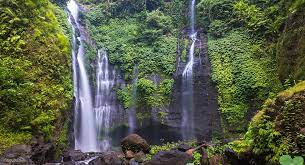Mount Agung: Bali's Majestic Volcano
Nestled on the enchanting island of Bali, Indonesia, Mount Agung stands tall as one of the island's most iconic landmarks and sacred sites. This active volcano, with its soaring peaks and rich cultural significance, has captured the imagination of locals and tourists alike. In this article, we delve into the allure of Mount Agung, exploring its geological wonders, religious importance, and the mesmerizing experiences it offers to visitors.
Geological Marvel:
Rising to an impressive height of 3,031 meters (9,944 feet), Mount Agung is the highest peak on the island of Bali. It is a stratovolcano formed by layers of volcanic ash, rock, and lava over centuries of eruptions. Its grandeur is a testament to the dynamic forces that have shaped the landscape of the region. While the volcano is classified as active, with periodic eruptions throughout history, it also presents an opportunity for scientific study and research into volcanic activity.
Spiritual Significance:
Mount Agung holds immense spiritual significance for the Balinese people. It is considered the most sacred mountain on the island and is closely tied to Balinese Hinduism. Known as the "navel of the world," the volcano is believed to be the dwelling place of the gods and goddesses. Balinese Hindus revere Mount Agung as the cosmic axis connecting the spiritual realm to the earthly plane.
Pura Besakih, often referred to as the Mother Temple of Bali, is located on the southwestern slopes of Mount Agung. This ancient temple complex is a focal point for religious ceremonies and draws pilgrims from all over Bali. The panoramic views of the surrounding landscapes from Pura Besakih are truly awe-inspiring, adding to the spiritual ambiance of the site.
Outdoor Adventures:
For adventure enthusiasts, Mount Agung offers a range of thrilling experiences. Hiking to the summit is an arduous yet rewarding journey, with breathtaking vistas along the way. The most popular starting point for the hike is the village of Besakih, where experienced guides can be hired to lead trekkers through the challenging terrain. The sunrise hike is particularly popular, as it offers a magical moment when the first rays of sunlight illuminate the island, creating a mesmerizing spectacle.
Exploring the lush forests surrounding Mount Agung is another way to appreciate its natural beauty. Guided jungle treks allow visitors to immerse themselves in the diverse flora and fauna of the region while learning about the volcanic ecosystem. Waterfalls, hot springs, and traditional villages dot the landscape, providing ample opportunities to engage with the local culture.
Preservation Efforts:
The preservation of Mount Agung and its surrounding environment is of utmost importance. The volcano's ecological significance extends beyond its cultural and geological aspects. Efforts are underway to maintain the delicate balance between tourism and conservation. Sustainable tourism practices and responsible trekking initiatives aim to minimize the impact on the fragile ecosystem while offering visitors a chance to appreciate the volcano's splendor.
Mount Agung stands as a symbol of Bali's natural and spiritual heritage. From its awe-inspiring geological formations to its deep-rooted religious significance, the volcano captivates the hearts of those who visit. As visitors trek through its challenging terrain, they not only witness breathtaking vistas but also gain insight into the rich cultural fabric of Bali. Mount Agung truly embodies the harmonious coexistence of nature, spirituality, and adventure, making it a must-see destination for anyone exploring the magical island of Bali.




